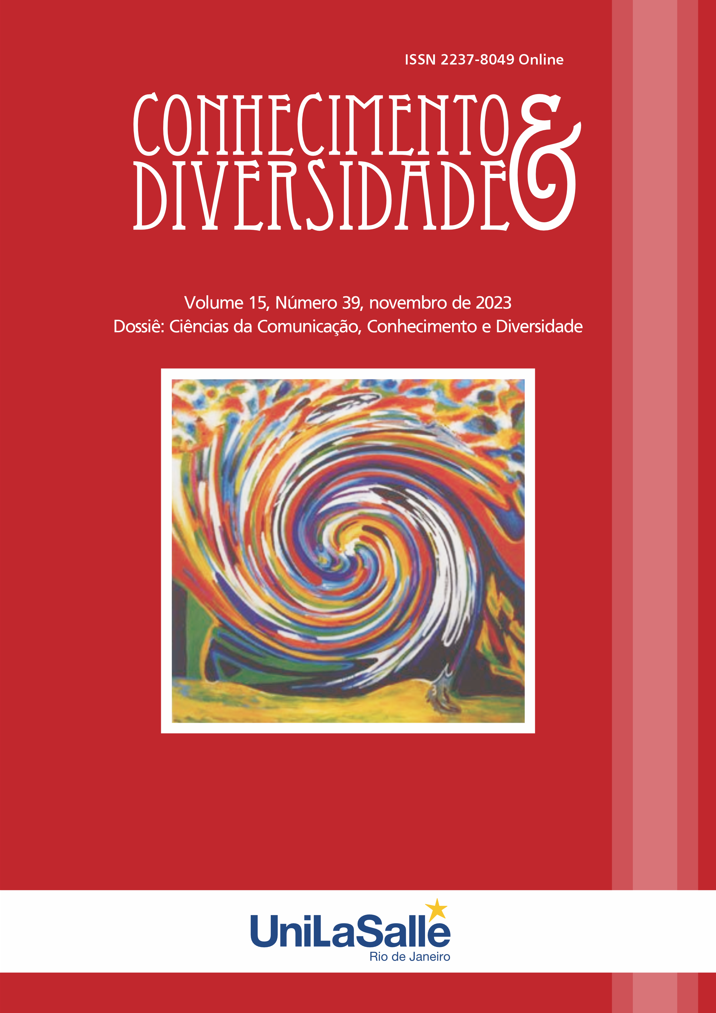WEBDOCUMENTARY
AN AUDIOVISUAL SPACE FOR INTERACTIVE NARRATIVES
DOI:
https://doi.org/10.18316/rcd.v15i39.11184Keywords:
Webdocumentary, Network, Interactivity, Digital technologyAbstract
Digital networked technology integrates the cultural practices of 21st century society, the functioning of states, politics and the way in which we relate to the world. “The Internet is the fabric of our lives. It could be compared to both an electrical network and an electric motor, in its ability to distribute the power of information throughout the entire domain of human activity” (Castells, 2003). Audiovisual production is no stranger to this online digital technology, on the contrary, through it it absorbs interactive aesthetic elements and gives rise to other narrative formats. The space of modern narrative is replaced by a continuous and uninterrupted narrative, the boundaries between author and audience are reconfigured in new interactive dimensions. The objective of this article is to analyze the interactive documentary as an audiovisual genre that emerges in a digital, hybrid and fluid digital culture. Interactive documentaries, I-docs, webdoc, interactive factuals, expanded documentary, transmedia documentary are some of the names used to refer to this new audiovisual genre that mixes characteristics of the Internet and the documentary genre. Based on a bibliographical research on the nature of this interactive genre and web documentary projects, we review its main characteristics and its current development.
References
Bruselas: De Boeck & Larcier (1996).
Castells, AG (2013). El documental interactivo: estado de desarrollo corriente _ Obra digital, (Vol 4)
Cardoso, G., & Castells, M. (2006). La sociedad red: del conocimiento a la acción política. En Conferencia promovida por el Presidente de la República (Vol. 4)
Castells, M. (2003). La Galaxia de Internet: Reflexiones sobre Internet, Negocios y Sociedad. Zahar.
De Queiroz Filho, AP y Rodrigues, M. (2007). Arte de volar en mundos virtuales, a. Anablume.
Lemos, A. (2005). Ciber-cultura-remix.
Lemos, A. (2008). Arte electrónico y cibercultura. Revista Famecos, 4 (6), 21-31.
Lemos, A. (2010). Cibercultura: tecnología y vida social en la cultura contemporánea. Sulina. Le Monde. (2014). M Webdocumentales. Recuperado el 12 de enero de 2017, de http://www.lemonde.fr/webdocumentaires/
Liesen, M. (2005). Navegando el ciberarte: apuntes sobre el arte y el imaginario en la contemporaneidad. Revista Electrónica de Ciencias Sociales, n , 71-94.
Nash , K. (2012). Modos de interactividad : analizar el webdoc. Medios, cultura y sociedad, 34 (2), 195-210.
Spinelli, EM (2013). Webdocumentary: producción de documentales multimedia e interactivos en internet. Revista Comunicação Midiatica , 8(2), p-169.
tatuaje, l., Gois, P. y Borges. (2011). Storytelling y estrategia: la cognición como forma de integración. Conocimiento Académico, No. 11 - Jun. 2011/ issn 1980-5950. recuperado de http://www.uniesp.edu.br/revista/revista11/pdf/artigos/10.pdf
Gaudenzi, S. (2013). El viviendo Documental : de representando la realidad a la co-creación realidad en digital interactivo documental ( Doctorado disertación )
Instituto Nacional de Estadística. (2015). Recuperado el 17 de enero de 2015, de http://www.ine.pt/xportal/xmain?xpid=INE&xpgid=ine_destaques&DESTAQUESdest_boui=157606674&DESTAQUESmodo=2
Gaudenzi, S. (2013). El interactivo documental como un vivo ._ _ Doc On-line: Revista Digital de Cine Documental, (14), 9-31. Gaudenzi, S. (2013). El viviendo Documental : de representando la realidad a la co-creación realidad en digital interactivo documental (Doctorado disertación, Goldsmiths, Universidad de Londres).
Gifreu, A., & Scolari, CA (2013). El documental interactivo como nuevo género audiovisual. estudio de la aparición del nuevo género, acercamiento a su definición y propuesta de taxonomía y modelo de análisis para fines de evaluación , diseño y producción. DOC On-line: Revista Digital de Cinema Documentário, (14), 307-309.
Fragoso, ML (2010). Arte, Diseño y Tecnología – instalaciones multimedia interactivas. Actas de SIGRADI 2010/ Disrupción, modelado y construcción: Diálogos cambiantes, 169-172.
Prodanov, CC y FREITAS, ECD (2009). Metodología del trabajo científico. Nuevo Hamburgo: Feevale.
Oliveira, L. U., Busarello , R & Beieging.P. (2013). Tecnología y nuevos medios : de la educación a las prácticas culturales y de consumo. Sao Paulo: Cultura Pimienta.
Pierre Lévy. (2010). Cibercultura . Editorial 34.
VAN DER MAREN, J. M. (1996). métodos de búsqueda _ verter l'educación. 2ª ed.
Downloads
Published
Issue
Section
License
Copyright (c) 2023 Lardyanne Pimentel Guimarães, António Costa Valente

This work is licensed under a Creative Commons Attribution 4.0 International License.
As recommended by the Public Knowledge Project, RCD adopts for its articles a CREATIVE COMMONS Attribution CC BY 4.0 license.
This license allows others to distribute, remix, adapt and build upon your work, even commercially, as long as they credit you for the original creation.
This is the most appropriate license offered.
Recommended for maximum dissemination and use of licensed materials.



